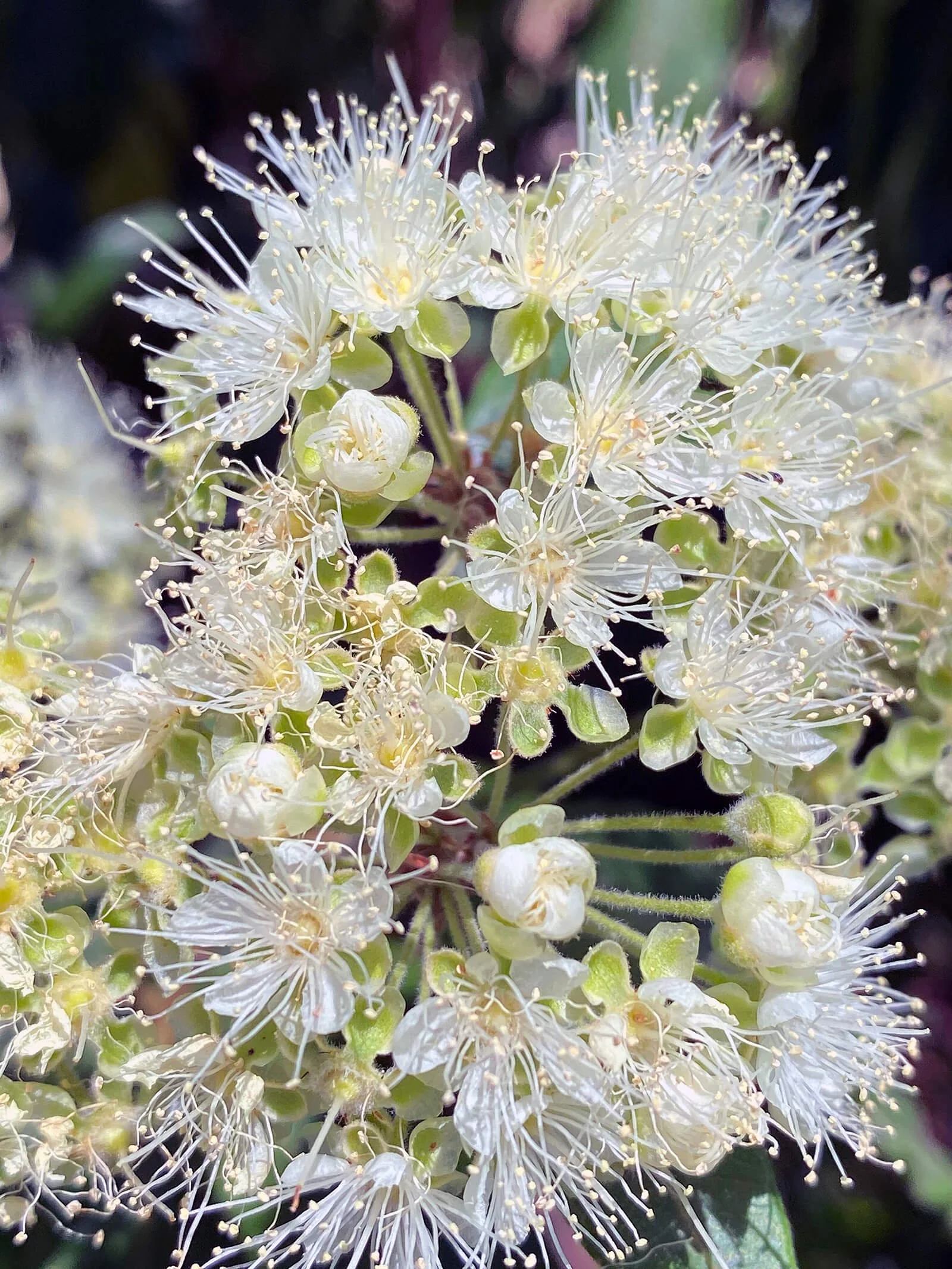Tree of the month: Why Lemon Myrtle deserves a place in your spring planting plan.
Image of Simon Marnie at IndigiGrow Nursery in front of Lemon Myrtle
Lemon Myrtle: A Standout Choice for Commercial Landscapes
If you’re looking for a versatile species for public landscapes, Backhousia citriodora (Lemon Myrtle) delivers on all fronts. Known for its aromatic foliage, dense canopy, and striking white flowers, this Australian native looks good and has practical value in urban and commercial settings.
Lemon Myrtle grows best in tropical and subtropical climates but can thrive in sheltered spots in Victoria, making it a reliable choice for adding seasonal interest and sensory appeal to public spaces.
Year-Round Impact in Streetscapes and Civic Spaces
Lemon Myrtle’s glossy green leaves in summer and clusters of creamy-white flowers in late spring and summer add vibrancy to streetscapes, civic gardens, and hospitality precincts. Its dense evergreen canopy also holds its shape through winter, giving reliable cover and structure year-round.
Sensory Appeal to Engage Communities
Few trees engage the senses like Lemon Myrtle. When crushed, its leaves release a strong lemon scent, adding a striking feature to parks, school grounds, and community gardens. This sensory appeal can help people feel more connected to a place, making it a valuable choice for placemaking projects.
Reliable Performance for a Variety of Conditions
When planted in the right spot, Lemon Myrtle grows well, responds to pruning, and tolerates moderate drought once established. In Victoria, it does best in warm, sheltered areas with well-prepared soil.
Culinary and Cultural Value Beyond Landscaping
Lemon Myrtle is prized in the food industry for its high citral content, up to 90%, giving it one of the strongest natural lemon scents. This makes it ideal for community gardens, educational spaces, and tourism areas that want to highlight edible plants.
In First Nations cultures, it has long been valued for its flavour and medicinal uses. While a commercial landscape isn’t a cultural space, planting Lemon Myrtle can create opportunities to share stories and acknowledge local heritage.
Where Lemon Myrtle Grows Best
Climate
Naturally suited to warm, frost-free zones, Lemon Myrtle also adapts to cooler southern climates, including much of Victoria, when given protection from strong winds and heavy frost. A north-facing aspect, windbreak planting, or positioning near buildings can create the microclimate needed for success.
Soil
Prefers well-drained, fertile soils with consistent moisture during establishment. Slightly acidic to neutral pH is ideal.
Watering
Requires regular deep watering in its first 1–2 years. Once mature, it can tolerate dry spells but benefits from supplementary water during extended heat.
Seasonal Care for Commercial Landscapes
Spring
Check for frost damage and prune lightly if required.
Apply a balanced slow-release fertiliser to promote flowering and foliage growth.
Summer
Monitor soil moisture; irrigate during heatwaves to maintain canopy health.
Prune post-flowering to maintain form in high-traffic or formal settings.
Autumn
Mulch to conserve soil moisture and regulate temperature ahead of winter.
Remove any damaged or crossing branches to prevent structural issues.
Winter
In frost-prone areas, protect young specimens with temporary covers or site them in microclimates where cold air dissipates.
Minimal pruning required unless for formative shaping.
Pros and Cons for Public Planting
Pros
Evergreen structure for year-round presence
Aromatic foliage for sensory appeal
Attractive flowers that draw pollinators
Adaptable to pruning and shaping
Culinary and interpretive potential for public engagement
Cons
Frost sensitive in early years
Requires sheltered site in cooler climates
Not suited to waterlogged or compacted soils
Design Applications in Commercial Planting
In commercial planting design, Lemon Myrtle works well:
As a feature specimen in civic squares or hospitality forecourts
In avenues or rows for pedestrian boulevards (with adequate spacing)
In mixed plantings alongside other evergreens for layered canopy structure
As part of edible landscapes in community gardens, botanic collections, or urban agriculture projects
Its moderate growth rate allows for predictable canopy development — a key advantage in urban planning where maintenance budgets and sight lines must be managed.
Why Consider It for Spring Planting Schedules
In Victoria, plant Lemon Myrtle in spring once the risk of frost has passed, giving it the full growing season to establish before the following winter. For projects in milder microclimates, late summer plantings can also succeed if irrigation is available.
At Arboretum Farm, we see Lemon Myrtle as more than just a landscape filler. In the right location, it can be a signature species — one that draws people in through scent, sight, and seasonal change.
We supply advanced stock grown for strong structure and transplant success, making it easier for you to achieve reliable performance in your projects.
Key Takeaways for Suppliers
Select sites with warmth and shelter for best performance in Victoria.
Use in designs where sensory appeal and year-round canopy cover add value.
Protect young trees from frost in their first 2–3 winters.
Incorporate into edible or interpretive plantings to extend its value beyond amenity.
Ready to secure Lemon Myrtle for your next project?
Contact our team for current availability or to discuss contract growing for large-scale orders. We can advise on best practice for planting and maintenance to ensure long-term success.



